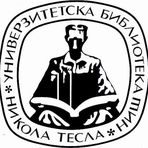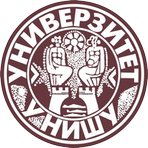Title
Zatvaranje strelne rane primenom fibrinskog lepka sa antibiotikom : eksperimentalna studija : doktorska disertacija
Creator
Đenić, Nebojša S. 1963-
Copyright date
2014
Object Links
Select license
Autorstvo-Nekomercijalno-Deliti pod istim uslovima 3.0 Srbija (CC BY-NC-SA 3.0)
License description
Dozvoljavate umnožavanje, distribuciju i javno saopštavanje dela, i prerade, ako se navede ime autora na način odredjen od strane autora ili davaoca licence i ako se prerada distribuira pod istom ili sličnom licencom. Ova licenca ne dozvoljava komercijalnu upotrebu dela i prerada. Osnovni opis Licence: http://creativecommons.org/licenses/by-nc-sa/3.0/rs/deed.sr_LATN Sadržaj ugovora u celini: http://creativecommons.org/licenses/by-nc-sa/3.0/rs/legalcode.sr-Latn
Language
Serbian
Cobiss-ID
Theses Type
Doktorska disertacija
Other responsibilities
mentor
Višnjić, Milan 1950-
član komisije
Mitković, Milorad, 1950-
član komisije
Stanojević, Goran
član komisije
Jevtić, Miodrag
član komisije
Popović, Zoran
Academic Expertise
Medicinske nauke
University
Univerzitet u Nišu
Faculty
Medicinski fakultet
Group
Katedra za hirurgiju
Title translated
THE EXPERIMENTAL CLOSURE OF THE GUNSHOT WOUNDS BY FIBRIN GLUE WITH ANTIBIOTICS
Publisher
Niš : [N. S. Đenić]
Format
PDF/A ( 130 listova)
description
Umnoženo za odbranu.
Univerzitet u Nišu, Medicinski fakultet., 2014.
Bibliografija: listovi 102-115.
Sažetak ; Summary.
Abstract (en)
Introduction. Primary delayed suture (PDS) of gunshot wound is used in the next 4-7 days from primary surgery (PS). This period coincides with the fibroblastic phase of wound healing. Fibrin glue has been used as a matrix for the local dosed release of antibiotics. Objective. Create the preconditions for the gunshot wounds closing without complications by the application of fibrin glue with antibiotics (FGA) 24 hours after primary surgical treatment. Methods. Fourteen pigs were wounded in the gluteofemoral region by the rifle M70AB2. All of them were treated according to the principles of war surgery doctrine, but seven of them after PS were treated with FGA (cephtriaxon and clindamycin). Wound healing was followed from clinical, laboratory, microbiological, histopathological (Hp) and MSCT side.
Results. From clinical and Hp aspect, after surgical treatment, in both groups were not found signs of additional necrosis and infection. Laboratory values WBC, Gr, PLT, ALT, AST, LDH, CRP, and CK, after initial jump caused by trauma, go to normal values by 4-7 days in both groups. After taking wound smear, in group treated with FGA in vitro was not registered significant growth of bactery colonies, unlike the group treated with standard technique. Histopatology confirmed that use of FGA stimulated synthesis of young collagen in wound.
Conclusion. Wounds caused by automatic rifle M70AB2 (7,62 mm), treated with FGA after PS and closed 24 hours later with PDS, in further evolution did not lead to development of complications. That is an advantage compared to the standard technique, where wounds are closed within 4-7 days.
Authors Key words
Strelne rane, puška, primarna hirurška obrada, fibrinski lepak, antibiotik, eksperiment
Authors Key words
automatic rifle, primary surgery, fibrin glue, antibiotic, experiment
Subject
616
Type
Elektronska teza
Abstract (en)
Introduction. Primary delayed suture (PDS) of gunshot wound is used in the next 4-7 days from primary surgery (PS). This period coincides with the fibroblastic phase of wound healing. Fibrin glue has been used as a matrix for the local dosed release of antibiotics. Objective. Create the preconditions for the gunshot wounds closing without complications by the application of fibrin glue with antibiotics (FGA) 24 hours after primary surgical treatment. Methods. Fourteen pigs were wounded in the gluteofemoral region by the rifle M70AB2. All of them were treated according to the principles of war surgery doctrine, but seven of them after PS were treated with FGA (cephtriaxon and clindamycin). Wound healing was followed from clinical, laboratory, microbiological, histopathological (Hp) and MSCT side.
Results. From clinical and Hp aspect, after surgical treatment, in both groups were not found signs of additional necrosis and infection. Laboratory values WBC, Gr, PLT, ALT, AST, LDH, CRP, and CK, after initial jump caused by trauma, go to normal values by 4-7 days in both groups. After taking wound smear, in group treated with FGA in vitro was not registered significant growth of bactery colonies, unlike the group treated with standard technique. Histopatology confirmed that use of FGA stimulated synthesis of young collagen in wound.
Conclusion. Wounds caused by automatic rifle M70AB2 (7,62 mm), treated with FGA after PS and closed 24 hours later with PDS, in further evolution did not lead to development of complications. That is an advantage compared to the standard technique, where wounds are closed within 4-7 days.
“Data exchange” service offers individual users metadata transfer in several different formats. Citation formats are offered for transfers in texts as for the transfer into internet pages. Citation formats include permanent links that guarantee access to cited sources. For use are commonly structured metadata schemes : Dublin Core xml and ETUB-MS xml, local adaptation of international ETD-MS scheme intended for use in academic documents.


